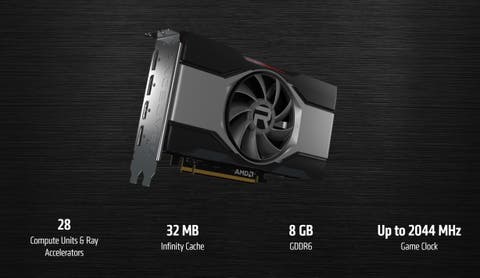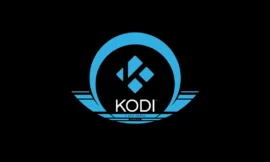AMD has launched the Radeon RX 6600, a mid-range graphics card that is presented as a cheaper alternative to the Radeon RX 6600 XT, a model that we had the opportunity to analyze at the time, and that was characterized by offering very high performance and good at rasterization under 1080p resolution. Its performance in 1440p was good, but it was penalized by its 128-bit bus and by the limitation established by its 32 MB of infinite cache.
With the Radeon RX 6600, AMD has kept the same approach. This graphics card uses the Navi 23 core, a chip that is manufactured in the 7nm process (TSMC), but in its XL variant, which means that it comes with a substantial specification cut that affects its raw power, as we will see later..
However, it has the same technologies as its older sister, including support for hardware-accelerated ray tracing and SAM, and has a cheaper starting price than that, since according to AMD it starts at $ 329, a figure that, converted to euros and after applying taxes, it would become about 339 dollars. For comparison purposes, I remind you that the Radeon RX 6600 XT has a starting price of 389.99 euros, although in the end, due to the current market situation, those prices are far from the real ones.

Radeon RX 6600 Specifications
- Navi 23 XL core at 7 nm.
- RDNA architecture 2.
- 1,792 shaders at 2,044 MHz-2,491 MHz, normal and turbo mode.
- 28 units to speed up ray tracing.
- 112 texturing units.
- 64 raster units.
- 128-bit bus.
- 32MB infinite cache.
- 8 GB of GDDR6 at 14 GHz.
The Radeon RX 6600 retains the 128-bit bus and memory subsystem of its older sister, but with GDDR6 memory running at 14 GHz, which means it has lower bandwidth ( 224 GB / s vs 256 GB / s). s ), although it can reach a very high peak with its 32MB of infinite cache. It goes without saying that all this has a trade-off, and that is that the Radeon RX 6600 is also going to lose performance substantially when we move in resolutions above 1080p.

Radeon RX 6600 performance in rasterization and ray tracing
TechPowerUp has shared a very interesting and comprehensive analysis that allows us to discover what this new graphics card is really capable of. In their analysis they have taken into account all the most important aspects, including both the performance in rasterization and the performance in ray tracing, and I must say that the results fit my expectations.

We recently told you that the Radeon RX 6600 was going to have a lower performance than the RTX 3060, a forecast that has been fully met, although we must clarify that the difference in performance between both graphics cards varies depending on the resolution used. Thus, when we look at 1080p, the difference in favor of NVIDIA’s graphics solution is only 4%, but when we raise the resolution to 1440p and 2160p the advantage in favor of the RTX 3060 goes up to 10% and 20%. %, respectively.

In ray tracing, the Radeon RX 6600 does not fare well. It does not surprise me either, when I analyzed the Radeon RX 6600 XT I already commented that AMD had to improve in that regard, and TechPowerUp only confirms my words, since it is even below the GeForce RTX 2060 in most cases, although it is surprising the good result it obtains in DOOM Eternal, something that I think may be motivated by its greater amount of graphic memory.
Jumping to see the working temperatures, we see that the Radeon RX 6600 is a fairly cool graphics card, since it moves in the 65-degree range without problem, and its consumption is not high either, since it is around 120 watts. This means that we could move it without problems even with a low-mid-range power supply.
The Radeon RX 6600 is, in part, a move in the right direction, offering excellent performance at 1080p, and it doesn’t stray much from the RTX 3060 at 1440p. However, the price of that is a problem, since it costs a little more than NVIDIA’s graphics solution even though it offers a higher value, because:
- It does a bit more in rasterization.
- It far exceeds its ray tracing performance.
- It has 12 GB of graphics memory.
- Supports DLSS second generation.

